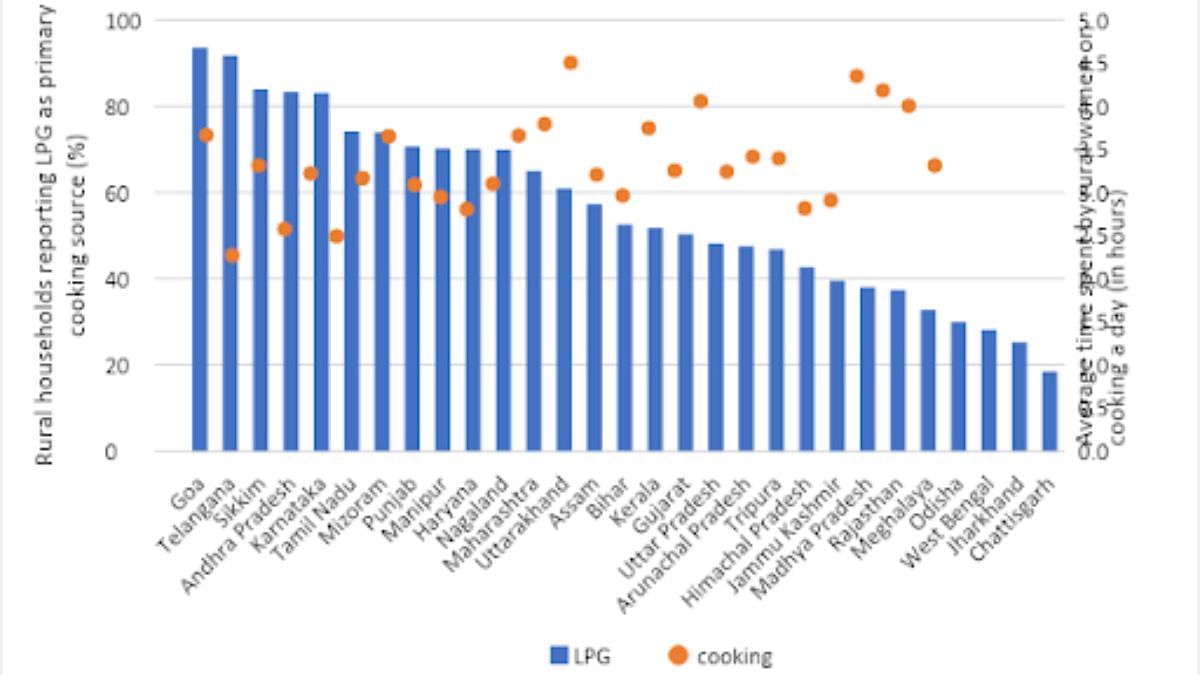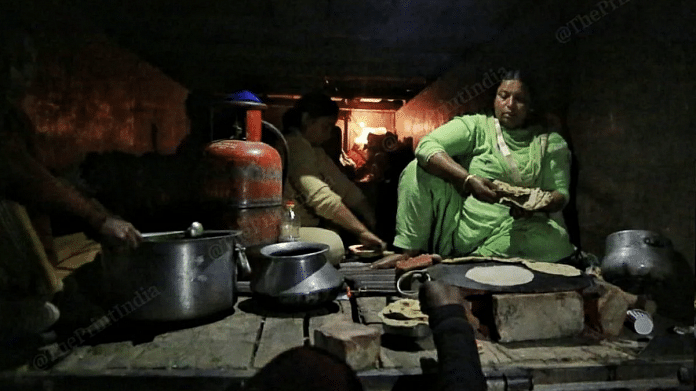A recent article in ThePrint brilliantly documents the unfolding implications of the new Karnataka government’s Shakti scheme, which offers free bus rides to women. The article follows a group of lower middle class women aged 30-60 as they travel across the state to visit temples, leveraging the scheme. This exploration reveals what the average Indian woman voter currently desires most from the political system: leisure time and a respite from daily household chores.
To better understand this impulse, we analysed data from the Time Use Survey (TUS), India’s first nationally representative survey of time use, covering 1.4 lakh households and 4.5 lakh individuals aged six and above. The National Statistical Office conducted the survey from January 2019 to December 2019. We specifically investigated whether the source of energy for cooking was associated with women’s time use.
Our interest in this variable stemmed from the widely held view, supported by academic studies, that the BJP’s re-election in the 2019 Lok Sabha election, was, at least in part, due to the popularity of its ‘New Welfarism’. This approach involved subsidising essential private goods such as bank accounts, cooking gas, toilets, and electricity for vulnerable populations. One of the policies under New Welfarism was the Pradhan Mantri Ujjwala Yojana (PMUY), which provided subsidised LPG to families living below the poverty line (BPL). Although the policy has undergone multiple updates since its inception in 2016, in its basic form, it provides cash assistance of up to Rs 1,600 to eligible households to cover the first LPG cylinder’s cost and installation charges. The LPG connection is registered in a woman’s name, and the connection, the first refill, and the hotplate are provided free of charge.
Graph 1 illustrates the relationship between the share of rural households using LPG as the primary source for cooking in the last 30 days preceding the survey and the average time spent by rural women above 15 years of age on cooking. The time spent on cooking involves preparing meals, serving them, cleaning up after, storing them, and other activities related to food preparation. The analysis focuses on the rural sector due to the higher usage of alternate fuels for cooking in rural households.
The data suggests two key findings: First, states with higher LPG usage for cooking correspond to less time spent on cooking by women. For example, in Telangana, where around 91 percent of rural households reported using LPG, women who participated in cooking spent around 2.3 hours a day. In contrast, in Odisha, where only around 30 percent of households used LPG, women spent almost 4.3 hours a day on cooking. Similarly, in Bihar, the average time spent on cooking was 4.5 hours a day. Second, the southern states reported higher LPG usage and, consequently, less average time spent on cooking compared to other regions.
Relationship between share of rural households reporting LPG as primary source for cooking and the time spent by a rural woman a day on cooking.

Also read: Karnataka women are on non-stop joy ride. Backpacking to temples & palaces on free Shakti
LPG usage and time spent on cooking
We also examined the association between LPG usage and the time spent on agriculture for own use and cleaning and maintenance of dwellings and surroundings. The assumption was that higher LPG usage would lead to less time spent on collecting firewood and related activities for own use. We found such relationships between LPG usage and time spent on agriculture for own use and cleaning and maintenance, although they are not displayed here for brevity.
The joint patterns of LPG use and time use we observed in the TUS 2019 data are also supported by experimental research. For example, a study in the World Bank Economic Review, based on an experiment conducted in rural Madhya Pradesh, found that households informed about the negative effects of cooking with solid fuels and public subsidies for cleaner LPG were 6 percent less likely to collect solid fuel, 4-5 percent less likely to use solid fuels exclusively for cooking, and spent 2.5% less time (35 minutes) on cooking per week, relative to 23 hours spent in total on cooking.
Returning to the provision of private goods, particularly LPG, we see that states are also taking action. For example, the government of Rajasthan, where assembly election is due on 25 November, has introduced the Rajasthan Mukhya Mantri Gas Cylinder Yojana (RMMGCY), which offers an additional subsidy of Rs 410 per refill for up to 12 refills to BPL households that received LPG connections through PMUY. The RMMGCY has been operational since 1 April 2023, with the first payments released on 5 June 2023.
Research on welfare policies in other developing countries with federal political structures suggests that opposition-led subnational governments may obstruct federal social policies if such policies are clearly attributable to the central government. The PMUY fits this description. Yet, there is little evidence that opposition-led state governments have actively tried to block its implementation. The RMMGCY, in fact, represents an innovative attempt by an incumbent state government facing strong headwinds of anti-incumbency to tap into the unrealised electoral potential of PMUY.
Also read: Young married women are sleeping less and working more in Indian homes, time-use data shows
Rising LPG prices have meant that few PMUY beneficiaries could afford cylinders beyond the first refill, which was provided free of charge. This despite the scheme being extended in 2022 to provide a subsidy of Rs 200 per refill for subsequent refills (applicable to a maximum of 12 refills per financial year). Indeed, the RMMGCY seems to have sparked a competition among political parties to provide LPG and refill subsidies. While the central government has increased the PMUY subsidy per refill to Rs 300, the Madhya Pradesh government announced an additional top-up for the month of ‘sawan’ (July-August). Other opposition governments are following suit. Abhishek Banerjee, the second-in-command in the TMC, has said that the INDIA coalition would provide LPG at Rs 500 if elected in 2024.
It is well-known that women bear a disproportionate burden of unpaid work within households, leaving them with limited time for leisure. Gender norms hold them responsible for unpaid and care work. The unequal burden is compounded by a lack of infrastructure and social programmes that could alleviate it. In this context, programmes like Ujjwala or Shakti may aim to offer slices of leisure or social time away from monotonous unpaid work, catering to the needs of the average woman voter.
Subhasish Ray is Professor and Associate Dean at the Jindal School of Government & Public Policy, O.P. Jindal Global University, Haryana; and an editor for the Journal of Genocide Research. He tweets @subhasish_ray75.
R Vijayamba is post-doctoral fellow at the Centre for Sustainable Employment, Azim Premji University. She tweets @RVijayamba.
Views are personal.
(Edited by Prashant)



